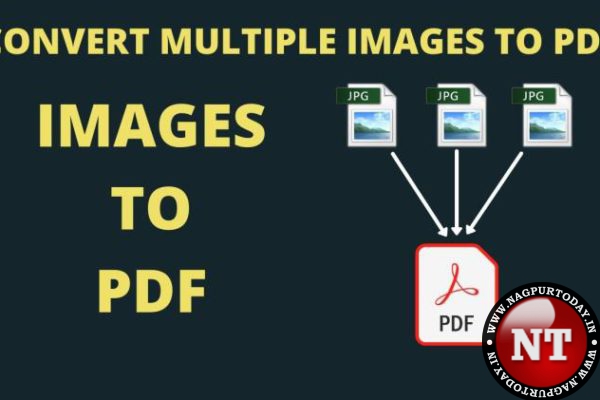In today’s digital world, the ability to convert images to PDFs is essential. PDFs are an efficient way to share documents, presentations, and images across different platforms and devices. However, converting JPEGs to PDFs can be a daunting task, especially for those who are not familiar with the process. That’s why we have created this step-by-step guide to help you successfully covert jpeg to pdf. Converting JPEGs to PDFs can save time and effort, as well as provide a more professional appearance for your documents. It is also crucial for businesses, where documents often need to be shared and printed in a consistent format. Our guide will provide you with the tools you need to successfully convert your JPEGs to PDFs, including the necessary software, tips for optimizing image quality, and troubleshooting common issues. With our comprehensive guide, you can be confident in your ability to create high-quality PDFs from your JPEGs.
Prepare your JPEG files properly
Preparing your JPEG files properly is an essential step in ensuring a successful conversion process when creating PDFs. The first step in this process is to ensure that your JPEG images are of high quality and resolution. This will ensure that your images appear crisp and clear when converted to PDF format. Additionally, it is important to make sure that your JPEG files are properly cropped and sized to ensure that they fit well within your PDF document. Finally, it is recommended to optimize the compression of your JPEG files to reduce their size without compromising image quality. This will allow for faster uploading and downloading of your PDF document. Proper preparation of your JPEG files will not only ensure a successful conversion process but also enhance the overall quality and user experience of your PDF document.
Choose the best PDF converter
Choosing the best PDF converter is an important step in successfully converting JPEGs to PDFs. With so many options available, it can be overwhelming to decide which one to use. It is crucial to select a converter that not only meets your needs but also produces high-quality PDFs. When choosing a PDF converter, consider factors such as ease of use, speed, quality of output, and additional features. Some converters offer batch conversion, while others provide password protection and compression options. It is also essential to ensure that the converter you choose is compatible with your device’s operating system. Taking the time to research and choose the best PDF converter will ensure that you have a smooth and successful conversion process, ultimately saving you time and effort.
Open the PDF conversion tool
To successfully convert JPEGs to PDFs, it is essential to use a reliable PDF conversion tool. There are various PDF conversion tools available online, but not all of them offer the same level of accuracy and quality. Therefore, it is recommended to choose a reputable and comprehensive PDF conversion tool that can handle different types of files, including JPEGs. Once you have selected the appropriate tool, open it and select the option to convert JPEGs to PDFs. This step is crucial in creating high-quality PDFs that retain the original content and formatting of the JPEGs. By following this step-by-step guide, you can ensure a successful conversion process and produce professional-looking PDF documents.
Select the JPEGs to convert
In order to successfully create PDFs from JPEGs, it is important to carefully select the JPEGs to convert. Begin by reviewing all the JPEGs in the folder or directory that you wish to convert. Identify any images that are of poor quality or that you do not wish to include in the final PDF document. It is important to ensure that all the JPEGs you select to convert are of the highest possible quality to achieve the best results in the final PDF document. Once you have identified the JPEGs you wish to convert, select them all using the appropriate selection tool in your chosen PDF conversion software. Take care to avoid selecting any images that you do not wish to include in the final document, as this can lead to errors and issues later in the conversion process.
Set the output options
In order to successfully convert JPEGs into PDFs, it is crucial to set the output options appropriately. This step will determine the final appearance and quality of the PDF document. The output options include page size, orientation, compression, color mode, and resolution. It is important to select the appropriate page size and orientation to ensure the document is readable and visually appealing. Compression settings can also be adjusted to reduce the file size of the PDF without sacrificing quality. The color mode and resolution should also be carefully chosen to maintain the integrity of the original image. By taking the time to properly set the output options, you can ensure a successful conversion from JPEG to PDF.
Check the PDF preview
The process of creating PDFs from JPEGs requires attention to detail to ensure a successful conversion. One of the crucial steps in this process is to check the PDF preview before finalizing the conversion. This step allows you to review the PDF version of your JPEG file and ensure that it appears as intended. Checking the preview can help you identify any issues with the conversion, such as missing or distorted images, text alignment problems, or formatting issues. It is recommended that you check the preview before sharing or printing the PDF to avoid any potential errors that could impact the quality of the document. By taking the time to check the PDF preview, you can ensure that your PDFs are accurate and of high quality, which is crucial for professional documents.
Save your converted PDFs
Saving your converted PDFs is an essential step in the process of creating PDFs from JPEGs. Once you have successfully converted your JPEG files to PDF format, it is important to save your new PDFs in a location where you can easily find them and access them as needed. This not only ensures that you have a backup of your important files, but it also helps you stay organized and efficient in managing your documents. To save your converted PDFs, simply click on the “Save” button in your PDF conversion software and choose a location on your computer or cloud storage service to store them. Be sure to label your files clearly and consistently to make it easy to search for and locate specific documents in the future. By following these simple steps, you can create PDFs from JPEGs with ease and confidence.
Verify the conversion accuracy
Verifying the conversion accuracy is an essential step in creating PDFs from JPEGs. After converting the JPEG file to PDF format, it is important to check the accuracy of the conversion to ensure that the final PDF document appears the same as the original JPEG. This step involves carefully reviewing the PDF document for any errors or inconsistencies, such as missing images, misplaced text, or distorted graphics. It is also important to check that the file size of the converted PDF is within acceptable limits. To verify the conversion accuracy, it is recommended to use a reliable PDF viewer that allows for zooming in and out of the document to check for any issues. By taking the time to verify the conversion accuracy, you can ensure that the final PDF document is of high quality and meets your intended purpose.
Conclusion
Converting JPEGs to PDFs is a simple yet highly useful task that can be accomplished using a variety of tools. By following these step-by-step instructions, anyone can successfully convert their JPEG files into PDFs. Whether you need to create a professional document or simply want to share a collection of images with friends and family, the ability to convert JPEGs to PDFs is an essential skill that can save time and effort. With the right tools and a little bit of practice, you can easily create high-quality PDFs from your JPEG files and enjoy the benefits of this versatile file format.

















